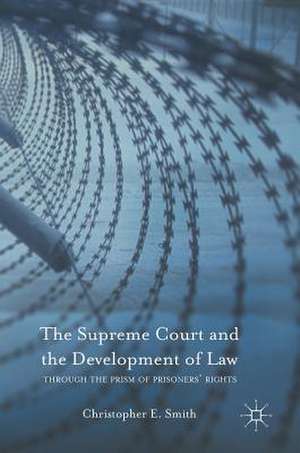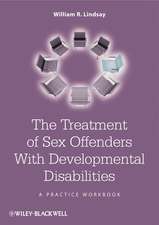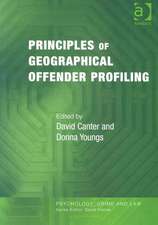The Supreme Court and the Development of Law: Through the Prism of Prisoners’ Rights
Autor Christopher E. Smithen Limba Engleză Hardback – 26 aug 2016
Preț: 392.60 lei
Nou
Puncte Express: 589
Preț estimativ în valută:
75.12€ • 81.86$ • 63.30£
75.12€ • 81.86$ • 63.30£
Carte tipărită la comandă
Livrare economică 23 aprilie-07 mai
Preluare comenzi: 021 569.72.76
Specificații
ISBN-13: 9781137567628
ISBN-10: 1137567627
Pagini: 217
Ilustrații: XIV, 227 p.
Dimensiuni: 148 x 210 x 20 mm
Greutate: 0.52 kg
Ediția:1st ed. 2016
Editura: Palgrave Macmillan US
Colecția Palgrave Macmillan
Locul publicării:New York, United States
ISBN-10: 1137567627
Pagini: 217
Ilustrații: XIV, 227 p.
Dimensiuni: 148 x 210 x 20 mm
Greutate: 0.52 kg
Ediția:1st ed. 2016
Editura: Palgrave Macmillan US
Colecția Palgrave Macmillan
Locul publicării:New York, United States
Cuprins
1 Shaping Constitutional Law: The Example of Prisoners’ Rights.- 2 Pioneering Litigation: Black Muslims as an Assertive Political Minority.- 3 The Expansion and Contraction of Rights: Through the Eyes of Justice Marshall.- 4 A Protective Constitutional Vision: Justice Stevens and the Principles of Liberty.- 5 A Rejectionist Constitutional Vision: Justice Thomas and Originalist Arguments.- 6 The Pragmatic Middle and Its Consequences: The Influence of Justice O’Connor.- 7 Strategic Interaction: Persuasion and Accommodation in Opinion Writing.- 8 Redefinition of Precedent: The Influence of Justice Scalia.- 9 Reaction and Retrenchment.
Notă biografică
Christopher E. Smith is Professor of Criminal Justice at Michigan State University, USA. He is the author of more than 20 books, including Constitutional Rights: Myths & Realities, Law and Contemporary Corrections, Courts and the Poor, and John Paul Stevens: Defender of Rights in Criminal Justice.
Textul de pe ultima copertă
This book illuminates the decision-making processes of the US Supreme court through an examination of several prisoners' rights cases. In 1964, the Supreme Court declined to hear prisoners’ claims about religious freedom. In 2014, the Supreme Court heard a case that led to the justices’ unanimous endorsement of a Muslim prisoner’s religious right to grow a beard despite objections from prison officials. In the fifty-year span between those two events, the Supreme Court developed the law concerning rights for imprisoned offenders. As demonstrated in this book, the factors that shape Supreme Court decision making are well-illustrated by prisoners’ rights cases. This area of law illuminates competing approaches to constitutional interpretation, behind-the-scenes interactions among the justices, and the manipulation of legal precedents. External actors also affect the Supreme Court and its decisions when the president appoints new justices and Congress targets the judiciary with legislative enactments. Because of the controversial nature of prisoners’ rights issues, these cases serve to illuminate the full array of influences over Supreme Court decision making.
Caracteristici
Examines several prisoners' rights cases over the span of several decades of Supreme court decision-making Includes an in-depth chapter on the influence of Justice Scalia Helps to shed light on the contexts and conflicts that define incarcerated offenders' daily lives















